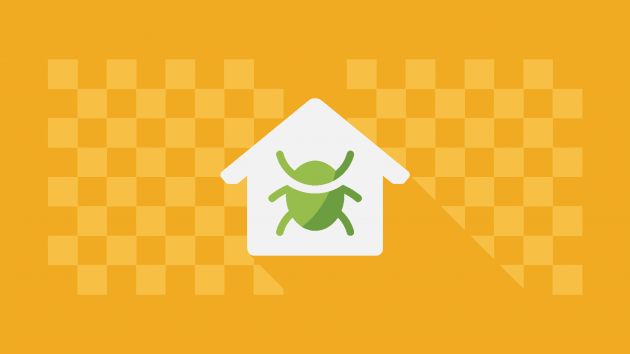
Bughouse Chess
Do you love chess but sometimes feel a little lonely playing one-on-one games? What if you had a way to play chess simultaneously with three other friends? Learn everything about Bughouse chess and how you can play chess in a whole new and exciting way!
- What Is Bughouse Chess?
- How To Play Bughouse Chess?
- Where Can I Play Bughouse Online?
- How To Play Bughouse On Chess.com?
- How Can I Win Bughouse Games?
- Conclusion
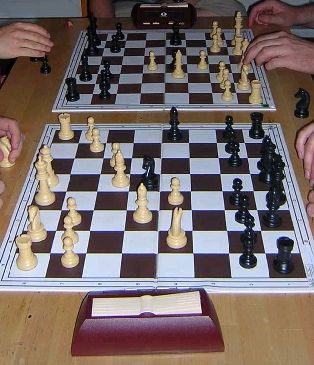
What Is Bughouse Chess?
Bughouse is a chess variant that is played by four players divided into two teams of two players each. Allied players work together to checkmate someone from the other side or make them run out of time. Bughouse is amusing and exciting to play, mainly because of its special capturing rules and usually fast time controls.
Also known as Siamese Chess, Swap Chess, and Exchange Chess, Bughouse is one of the most well-known modifications of chess in the world.

How To Play Bughouse Chess?
While most of the standard chess rules are still applied to Bughouse, you need to understand a few crucial changes to play it. Let's take a look at the differences between regular chess and Bughouse.
How Do The Teams Work?
Bughouse is played by two teams of two players each. In each team, one person plays as White and the other plays as Black.
When playing over the board, the two chessboards used are set side-by-side, so teammates sit together.
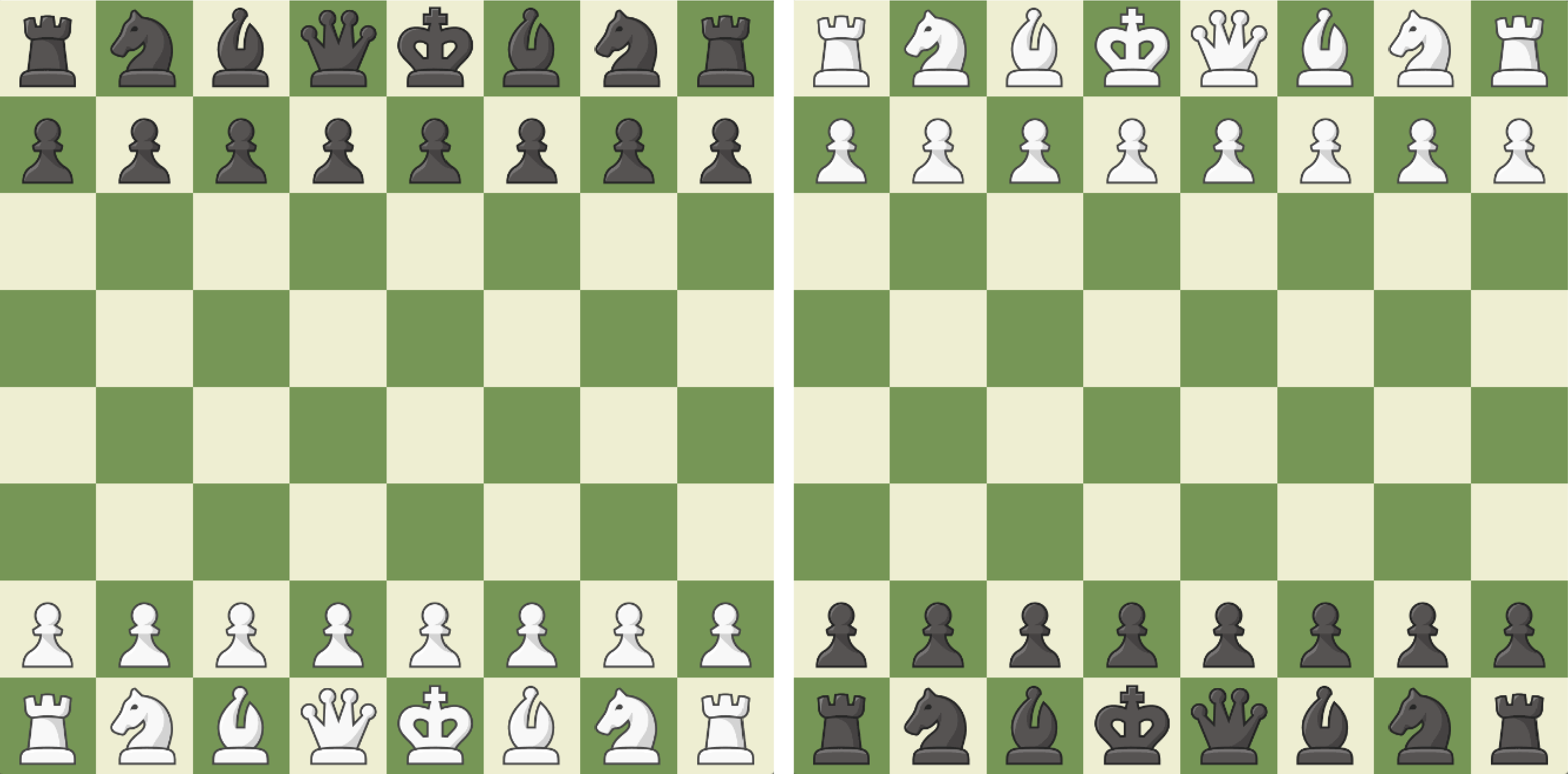
On Chess.com, your partner's board is also easily seen next to your own. This way you can both be aware of what is going on during the game and plan strategies together.
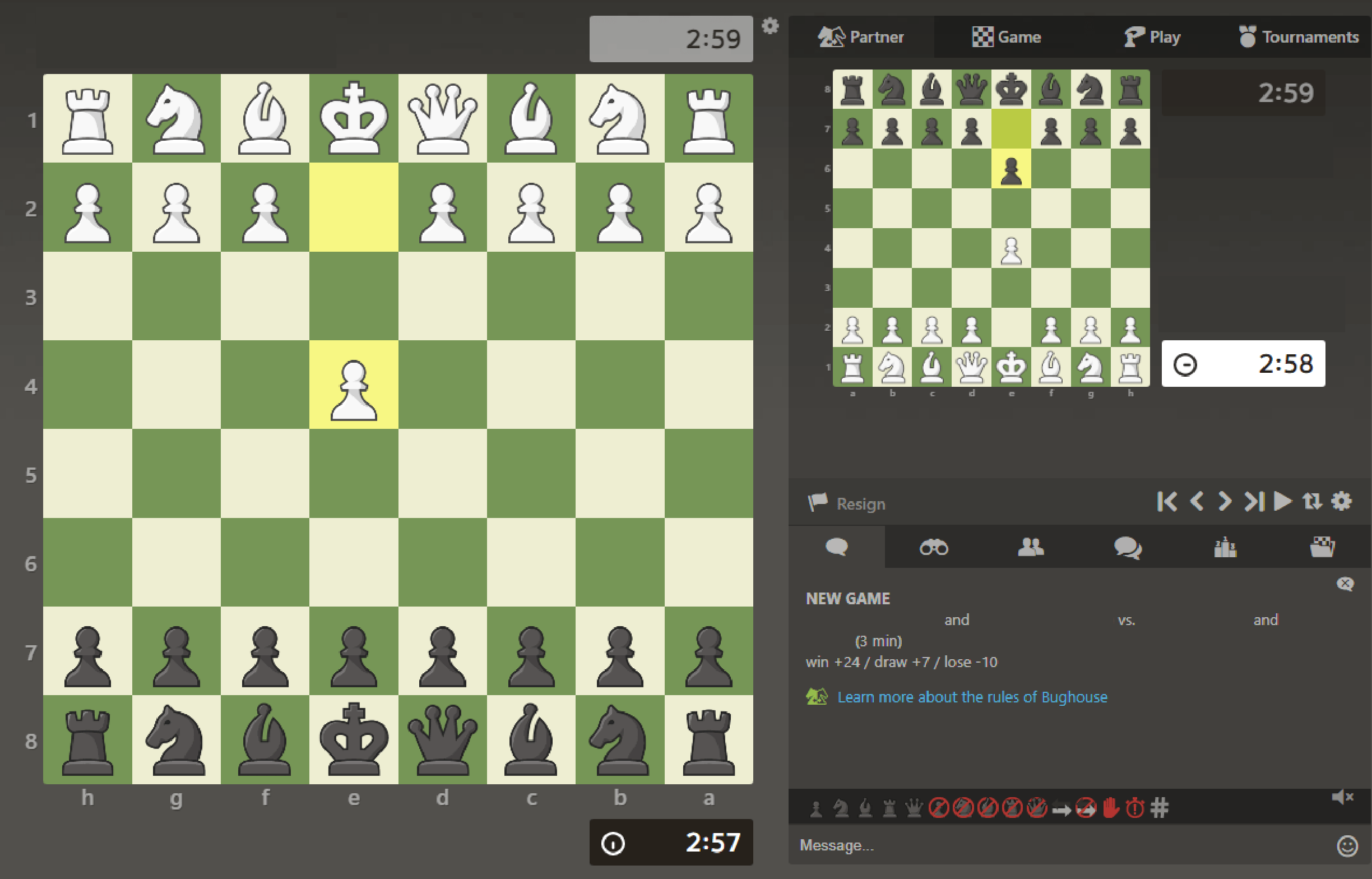
What Is The Time Control In Bughouse?
Bughouse games are usually played with blitz time controls. This is important because, as you will see, players can wait for their teammate to provide them with an extra piece before playing their next move.
Time is not shared among teams, so each board has its own clock. Both clocks are started simultaneously as the game begins, and then the players on each board control their own clocks.
Usually, if time runs out for a player, the game ends, and the other team wins. This is how Bughouse is played on Chess.com. Sometimes, though, when people are playing over the board, they can decide that the game on the other board can continue.
What Are The Rules For Capturing?
Capturing is one of the most fun and thrilling aspects of Bughouse.
Remember that players from the same team play as different colors? Well, once you capture one of your opponent's pieces, you can give that piece to your partner. Your teammate then can keep that piece reserved for later. At any point, they can use their move to put the captured piece on the board and use it to their advantage! This procedure is called "dropping" a piece.

Here's an example: imagine you are playing as White, and your friend on your team is playing as Black. If you capture your opponent's black queen, you can pass it to your friend, and he can spend a turn placing the royal lady on his board at any point in the game!
Dropping pieces can even save you from being checkmated. What would usually be an inescapable situation in a regular game of chess can be avoided in Bughouse, if you have a piece to help you. Note, however, that players cannot drop pawns on the first or eighth ranks.
When Is The Game Over?
The game is over after one of the players is defeated, runs out of time, or resigns. The game can also end if the players agree to a draw. When the first player loses, the opposing team wins the match, even if the other game is still going on.
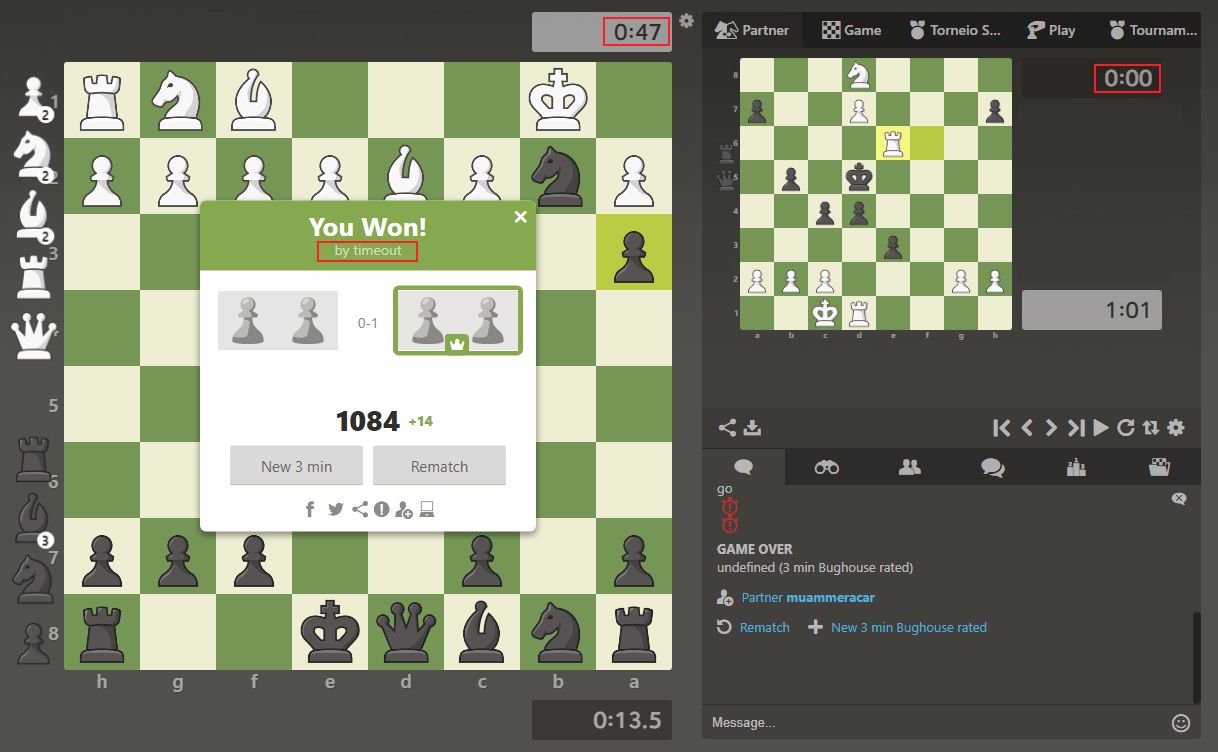
In some Bughouse matches, even when one game ends, the other one can continue. After both games finish, the results of the boards are added together to define the winning team.
What Happens When Pawns Promote?
Pawn promotion in Bughouse occur just like in regular chess. When a pawn reaches the farthest rank from where it started (eight rank for White, first rank for Black), it can promote to any minor or major piece.
You should know one special rule, however. After you capture a promoted pawn, your teammate will receive the original pawn and not the piece it becomes after the promotion.
For instance, if you are playing as Black and capture a pawn that was promoted to a knight, your friend will receive a white pawn and not a white knight.
Communication Among Team Members
Unlike regular chess games, where you are not allowed to share ideas with the person playing, communication is vital in Bughouse.
Both players are encouraged to talk to each other and share plans and strategies to outplay their opponents.

Where Can I Play Bughouse Online?
The best place to play this fabulous chess variant is here at Chess.com! You can even invite your friends to face other opponents together.
How To Play Bughouse On Chess.com?
Want to try some Bughouse games? Check out how to do it here on Chess.com!
The easiest way to do it is by visiting our Variants page and selecting the Doubles (Bughouse) option.
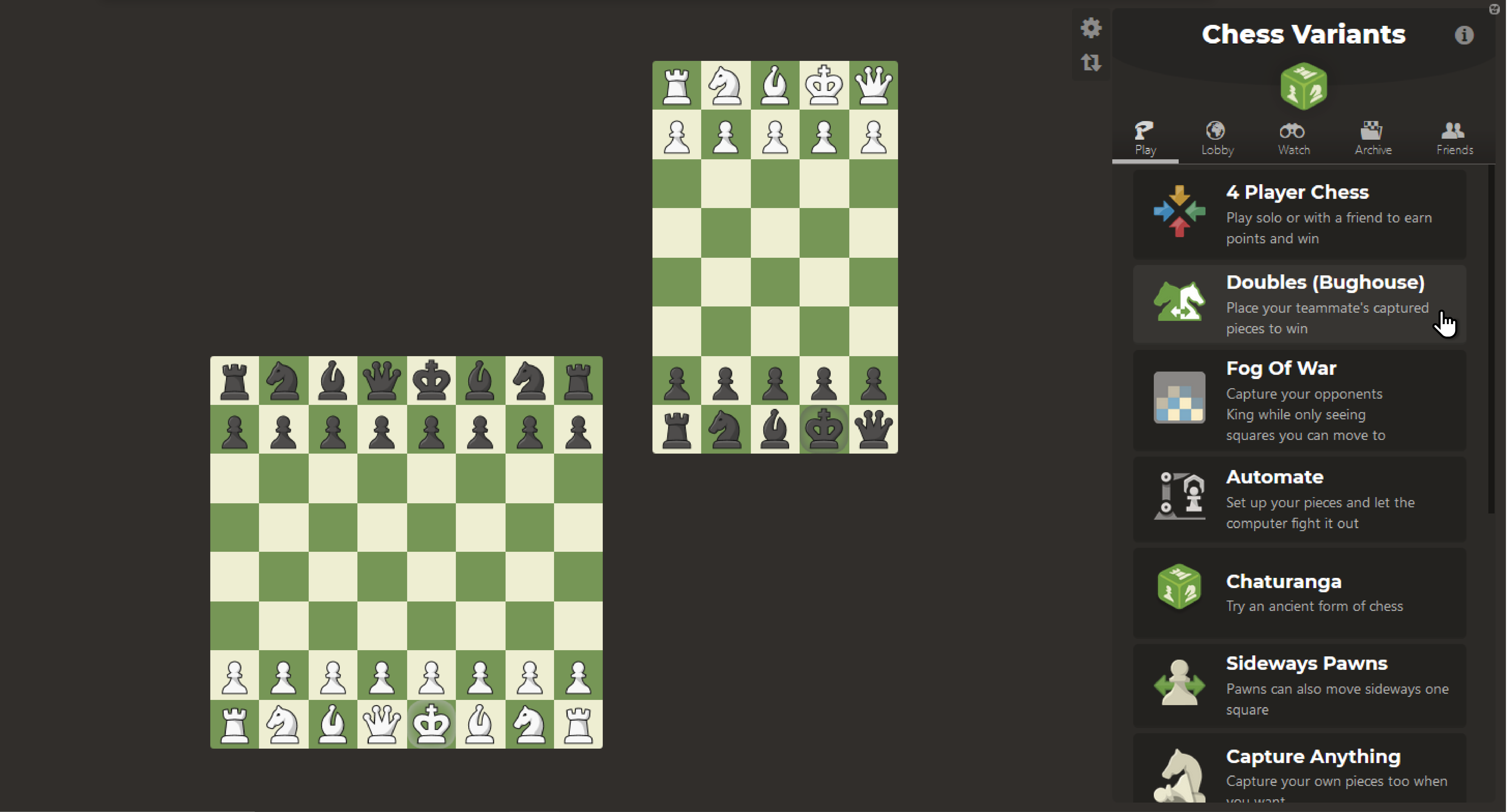
You can also do it through Play Online by following the steps below:
1. After logging into your account, go to the left-hand side of the screen, place your cursor over "Play," and click "New Game."

2. Click the button immediately below "Type."

3. Select "Bughouse."

4. Select the desired time control right under "Time."

5. If you want to play with one of your Chess.com friends, click "Change" next to "vs. Random" and click on your friend's username.

6. Turn on the "Rated" option if you want to play a rated game.

7. If you want to select a rating range for your opponent, click "Options."

8. Select "Play" and wait for the system to match you with the other players.
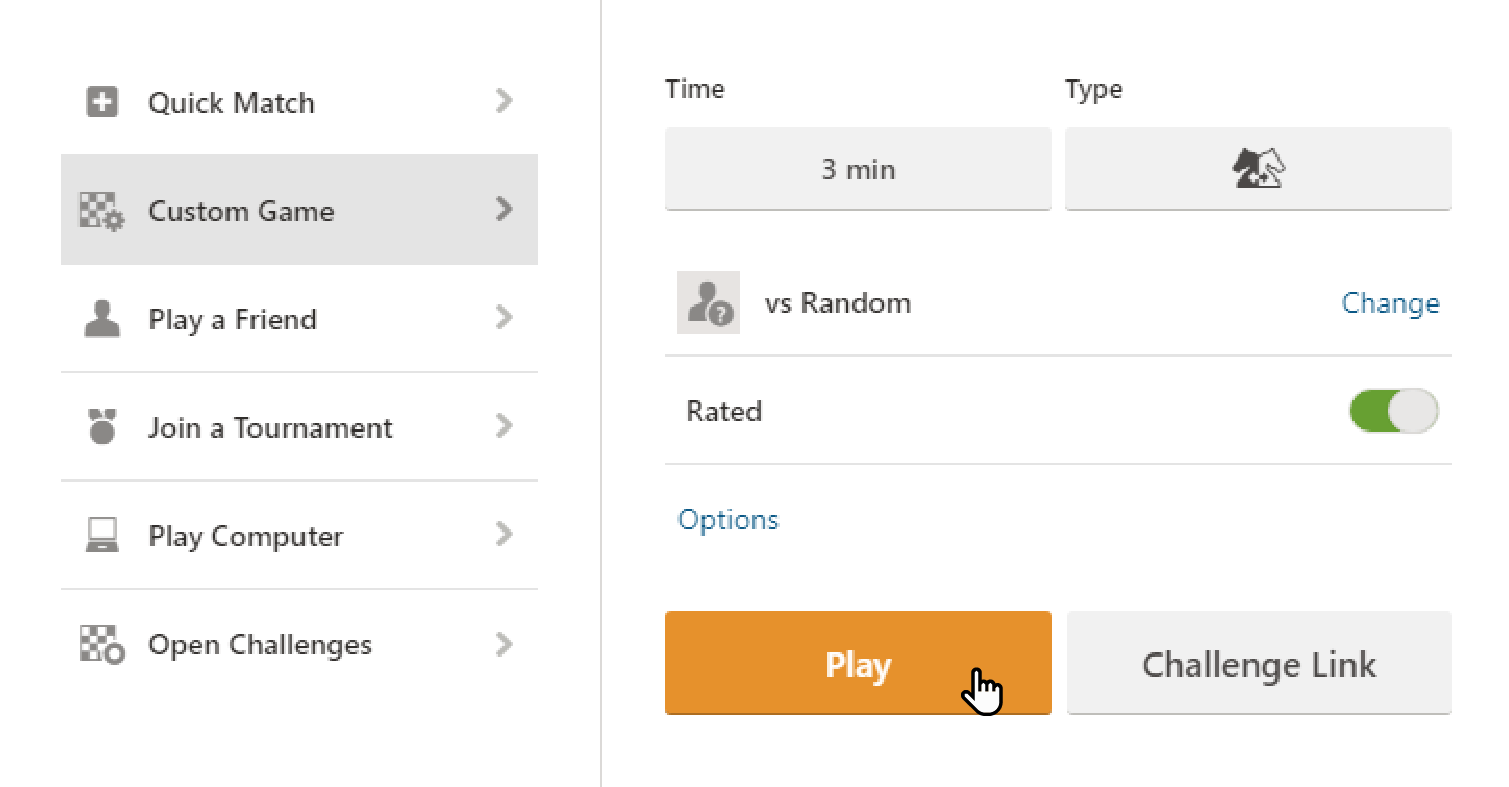
How Can I Win Bughouse Games?
Most of the principles of regular chess still apply to Bughouse. Good practices like developing your pieces and controlling good squares should always be part of your strategy, but you must pay attention to some other details. Check out this article by IM Daniel Rensch to learn how to improve your Bughouse play!
Conclusion
Bughouse can be a pleasant new way for you to enjoy the game of chess. Now that you know the rules for this variant, why don't you create a Bughouse challenge?
Do you want to play other chess variants on Chess.com? Click the button below!








